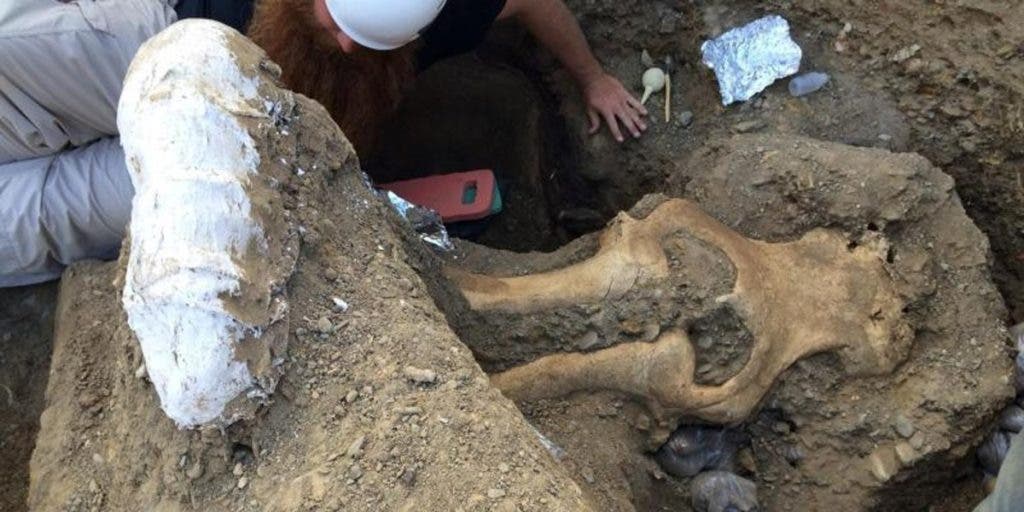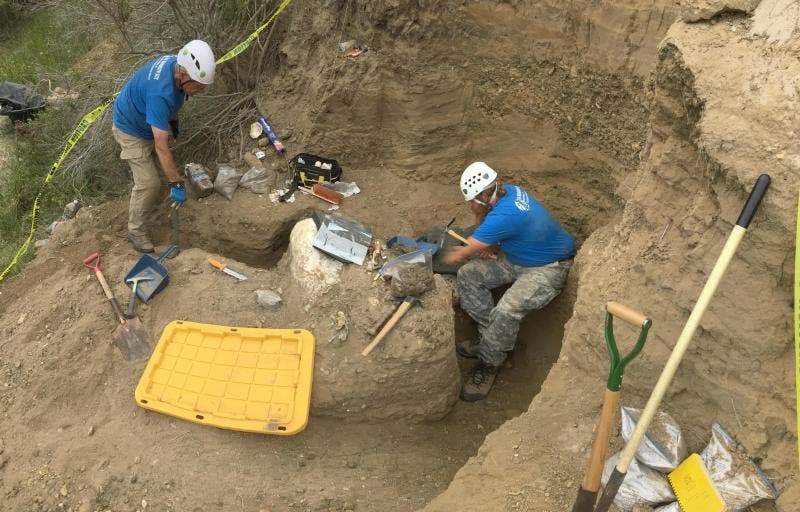
A biologist from the National Park Service discovered a rare and unusual mammoth skull buried in a 13,000-year-old rock layer on the Santa Rosa Island, the second largest landmass in the Channel Islands, California. The fossil of the extinct megafauna is leaving many paleontologists scratching their heads. Despite the fact that it’s possibly the best preserved mammoth skull ever found, the individual it belonged to can’t seem to be confined to a species yet — it’s too big for a pygmy mammoth and too small to have come from a Columbian mammoth. Some say it’s a new species while others believe the truth lies somewhere in between.
“I have seen a lot of mammoth skulls and this is one of the best preserved I have ever seen,” said paleontologist Justin Wilkins, a member of the U.S. Geological Survey (USGS) team that investigated the find.
“[the fossil] is extremely rare and of high scientific importance. It appears to have been on the Channel Islands at the nearly same time as humans,” Wilkins added.
The first mammoths showed up in North America around two million years ago but it was only during the last two ice ages that the Columbian species, which could grow to be up to 14 feet tall, made its way to the Channel Islands 100 miles west of Los Angeles. Once the ice receded, many populations became trapped on the island and evolved into pygmy mammoths, an endemic species to the Channel Islands which grew only to six feet tall.

The newly found mammoth skull found in pristine shape doesn’t seem to fit any of the two species, Columbian or pygmy, judging from its size. To make things even more confusing, one of its two tusks is nearly five feet long and coiled in a manner that resembles those of fully grown mammoths but the left tusk is shorter and sloped, more like a juvenile.
This has prompted some scientists to say the Santa Rose skull may belong to a transitional species. Whatever’s the case, a subsequent examination of the mammoth’s teeth should put the matter to rest. The analysis will also tell us how old the mammoth was when it died, so we can tell for sure whether it was an adult or juvenile.
More interesting than the mammoth’s lineage, however, might be its story. The giant mammal lived 13,000 years ago or roughly the same timeline of the “Arlington Man,” a 13,000-year-old human skeleton also found on Santa Rosa. Some 3,000 years later humans were already spread throughout the continent and the Channel Islands’ mammoth went extinct. The present finding might help unravel a link between the two.
The remains also seem to confirm a long-held hypothesis that there were two mammoth migrations to the Channel Islands.
“The discovery of this mammoth skull increases the probability that there were at least two migrations of Columbian mammoths to the island: during the most recent ice age 10 to 30,000 years ago, as well as the previous glacial period that occurred about 150,000 years ago,” said USGS geologist Dan Muhs.






